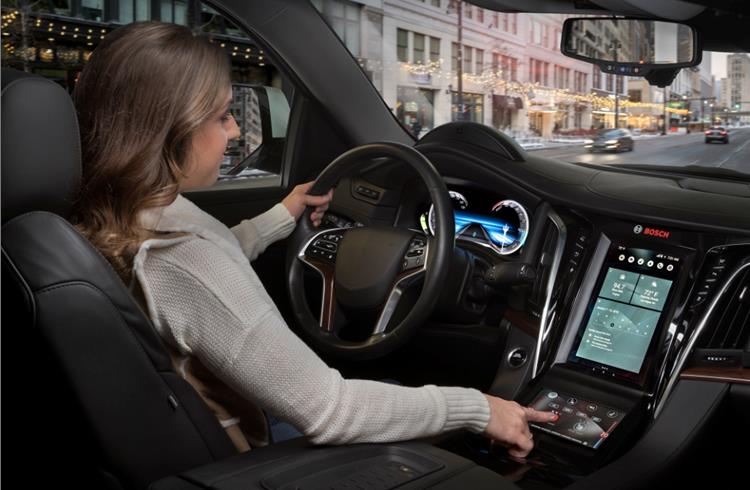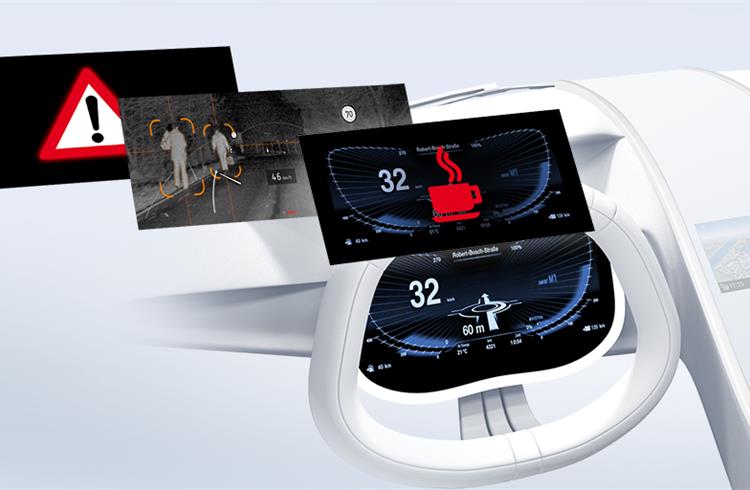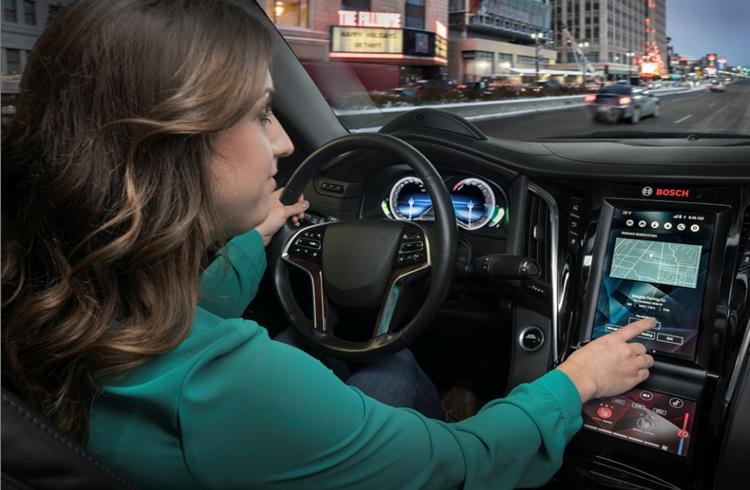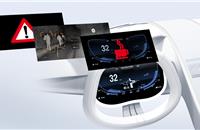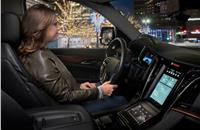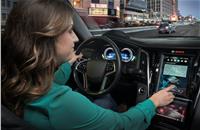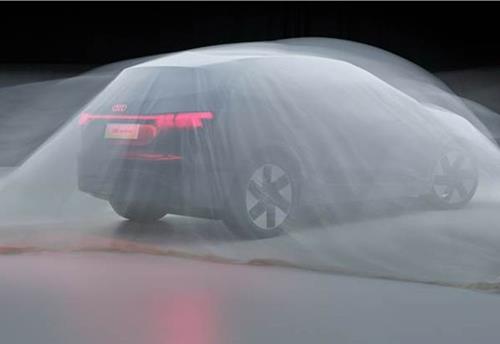Bosch re-imagines the future of vehicle cockpit
Bosch is showcasing its smart cockpit technology that lets drivers concentrate on driving, eyes can be kept where they should be – on the road.
Technology major Bosch says that for years, touchscreens, handwriting recognition, and gesture control have been gradually replacing conventional mechanical buttons and switches in the car – to the detriment of road safety. It says that controlling the navigation system, the on-board computer menu, or the radio is a distraction.
At CES 2018, Bosch is showcasing its smart cockpit technology that lets drivers concentrate on driving, eyes can be kept where they should be – on the road. “We are uncluttering the cockpit. The more complex the technology in modern vehicles, the simpler and more intuitive control systems need to be,” said Dr. Steffen Berns, president of Bosch Car Multimedia. Artificial intelligence helps transform the human-machine interface (HMI) into a command centre that thinks ahead.
“Initial functionalities with artificial intelligence feed valuable information into the HMI about the driver, the vehicle, and the surroundings. That enables proactive adjustment of displays and controls to any given driving situation,” Berns said.
The company is also drawing on this information for the development of automated driving, where HMI acts as the core element that allows optimal interplay between people and vehicles. Artificial intelligence (AI) helps transform the human-machine interface (HMI) into a command centre that thinks ahead. “Initial functionalities with artificial intelligence feed valuable information into the HMI about the driver, the vehicle, and the surroundings. That enables proactive adjustment of displays and controls to any given driving situation,” Berns stated.
Operating HMI
The technology major quotes findings of Allianz Center for Technology, which mentioned that 63 percent of drivers in Germany operate their navigation systems while driving, 61 percent switch through radio stations, and 43 percent browse through complicated menus on their on-board computers. Wherein, it states that distractions like these are among the most frequent causes of accidents.
“Our job is to make HMI a reliable companion in every situation,” Berns remarked. At the heart of the HMI is a voice-controlled assistant that responds to the users’ natural speech and can even understand dialects. Thanks to its natural language understanding (NLU), drivers can talk to the assistant Casey as they would with a co-passenger. Another virtue of Casey is her ability to think ahead, drawing on artificial intelligence, she can learn to predict likely destinations depending on the time of the day; or if she is asked to switch on the radio, she knows the driver’s preferences, such as listening to the news in the mornings and music in the evenings.
Digital displays make driving safer
Humans perceive 90 percent of our sensory input through our eyesight, which means that, as drivers, we have to have important information directly in our field of vision at the right time. The digital displays are taking over the cockpit, this means more than simply keeping an eye on speed, rpm, and driving range.
Bosch’s smart algorithm is capable of learning filter and prioritise content – if the roads are slippery, drivers immediately get a warning signal directly in their field of vision, while less important information, such as the current radio station, is switched to another display, helping the driver concentrate on the road.
The company says when it comes to operating infotainment, air conditioning, and radio, touchscreens and central controllers have a decisive drawback: the driver has to look to enter commands accurately. At a speed of 50kph, the car will travel 30 meters while the driver’s eyes are taken off the road for two seconds; at 120kph on the freeway, the distance increases to more than 60 meters – driving blind.
“Car displays with haptic feedback are going to catch on. They allow easier operation of all manner of functionalities – for example radio and phone functions – faster, simpler, and, most importantly, safer,” Berns added. The keys displayed on the touchscreen feel just like real buttons, the haptic display thus conveys the feeling that the user is adjusting the volume using a real slide control. As a result, drivers can keep their eyes on the road for longer.
A central cockpit computer controls the HMI
Displays, infotainment, voice control: one consequence of the advanced cockpit technology is the increased demands on processing power, wiring, and the architecture of on-board networks. In current production vehicles, five, 10, or as many as 15 electronic control units run displays and electronic devices.
There is a need for more processing power to show coordinated information on all displays. In the future, Bosch says it will run the entire HMI through a cockpit computer and will integrate more functionalities in a single central processor. That will enable the convergence and synchronisation of the infotainment system, the instrument cluster, and other displays so that any given information can be orchestrated, managed, and displayed anywhere in the vehicle at any given time.
“It gives car drivers and passengers virtually unlimited possibilities for adjusting the air conditioning, controlling the navigation system, or changing radio stations, from anywhere in the vehicle,” said Berns.
In addition, reducing the number of control units also frees up valuable installation space, lowers vehicle weight, and shortens the time needed for the development of new vehicles. And, in the future, over-the-air updates will ensure that the cockpit computer and hence the entire HMI is kept up to date with the same simple process used for smartphones.
RELATED ARTICLES
Netradyne expands UK operations via partnership with Intelex
The collaboration between Netradyne and Intelex marks a substantial leap forward in advancing road safety and fleet mana...
Audi Q6L e-tron, Q5 e-tron RS, SQ6 coming to Beijing motor show 2024
Long-wheelbase Audi Q6 e-tron, SQ6 based on PPE platform.
Sona Comstar opens new plant in Mexico to cater to growing EV demand in N America
The new facility, set up to meet the growing demand for high-quality driveline solutions for BEVs in North America, will...





 By Autocar Pro News Desk
By Autocar Pro News Desk
 09 Jan 2018
09 Jan 2018
 9316 Views
9316 Views



